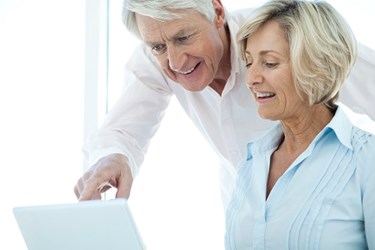How Technology Benefits Healthcare Of Older Patients
By Megan Williams, contributing writer

Too often technology is thought of as a venue only for the young and active. With an aging U.S. population though, the opportunities for the use of tech to improve the lives of the elderly are increasing on a daily basis. This is especially true in the healthcare industry, where the complications around aging and quality of life management are a constant challenge.
Potential Benefits
In a study conducted by the Journal Of Medical Internet Research in Spain, 99 elderly participants were evaluated in their use of the ALICE app for both smartphone and tablets. The app is designed to allow users to store information around prescriptions, physician instructions, pictures of medications, alerts and reminders, and also features a monitoring function where the patient alerts a caregiver after a medication has been taken.
The results were encouraging. While the app did not lower medication errors (instances where the patient took the wrong pill or incorrect dosage), it did improve schedule adherence. Adherence (as measured on the Morisky Medication Adherence Scale) increased by 28.3 percent between control and experiment groups, and missed doses were 27.3 percent lower.
Technology In The Lives Of the Elderly
Technology for the elderly goes beyond medication reminders though, and there are myriad benefits to be gained. Unfortunately, the field has seen limitations based on assumptions about the elderly. As authors of the Spanish study, José Joaquín Mira PhD and Isabel Novarro from Miguel Hernández University, Elche, Spain remind us, “With the growth in use of tablets and smartphones, various interventions have been designed to improve adherence and it has been found that such tools are effective and help to increase patient independence. However, these apps have various limitations: they are conceived for patients familiar with these technologies, they have not been written for elderly patients (assuming that they would not benefit from this type of tool), and in most cases, patients have not been consulted about the design.”
Other apps though, are beginning to break ground in this area. Apps like 5Star Urgent Response is a personal emergency response app for iPhone and Android. It allows users immediate connection with certified response agents at the press of a button. Agents are able to assess a patient’s situation, find their location using the app’s patented GPS technology and dispatch emergency services if necessary. The app is designed to appeal to people who may be hesitant about calling 9-1-1 if they don’t feel their situation is critical enough.
Apps like Instant Heart Rate and HeartWise allow users to measure heart rates with their phones and track blood pressure (respectively). The apps also offer options that record measurements over time, allowing users another, more personalized level of health monitoring.
Integration Into A Larger System
These apps are more than just phone add-ons though. Many are being integrated into, or are designed solely for the purpose of serving growing needs in the area of telemedicine. This article from InformationWeek highlights some of the growing and very real potential apps have for integration into not only the lives of senior patients, but into the overall healthcare pipeline.
Seniors are adopting technology at an amazing rate — 50 percent of older Americans use the Internet and even more have a mobile phone (according to a 2012 PEW report). The senior market might not be as sexy or exciting as younger markets, but it does hold significant opportunities for innovators willing to address senior needs.
